Figures & data
Figure 1. Overview of the study site with (a) the location of the two islands in the southern central part of the Lena River Delta. (b) The investigated lakes on Samoylov Island and coring site of the Lena River opposite the Samoylov research station. (c) The investigated lakes on Kurungnakh Island (Höfle Citation2015; Landsat imagery).

Table 1. List and aerial image of the investigated water bodies and the retrieved ice cores, their coring depths, and the coordinates.
Table 2. List of the investigated water bodies and their morphometric characteristics relevant for freezing.
Table 3. Characterization of the four winters during which the investigated ice cores grew.
Figure 2. Characterization of the four investigated ice-growing periods 2012–13, 2015–16, 2017–18 and 2018–19 by (a) snow depth and (b) air temperature (calculated by average values for each day). Meteorological data were provided by the Samoylov long-term observatory (Boike et al. Citation2019b).
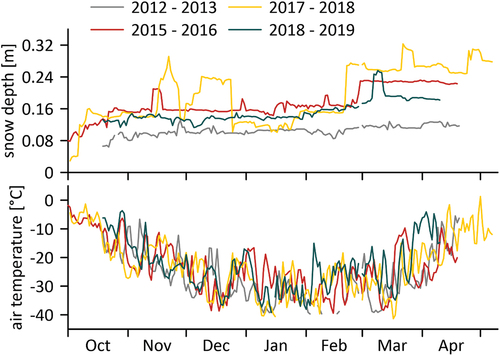
Table 4. Snow depth and air temperature data for the four ice-growing periods (estimated freeze-up until coring), provided by the Samoylov long-term observatory.
Figure 3. Ice morphology, stable isotope signatures, EC, and modeled ice growth (for selected cores) for group I ice cores.

Figure 4. Ice morphology, stable isotope signatures, EC, and modeled ice growth (for selected cores) for group II ice cores.

Figure 5. Ice morphology, stable isotope signatures, EC, and modeled ice growth (for selected cores) for group III ice cores.

Figure 6. Ice morphology, stable isotope signatures, EC, and modeled ice growth (for selected cores) for group IV ice cores.

Table 5. Typical values of α, the fitting parameter for calculation of ice thickness using Stefan (EquationEquation (2))(2)
(2) .
Table 6. Calculated Ashton ice thicknesses vary based on chosen input parameters.
Table 7. Stable isotope (δ18O, δD, and d-excess) values (mean [min. to max.]), as well as slopes and intercepts in the δ18O-δD diagram for all sampled ice cores (δD = slope δ18O + intercept).
Figure 7. δ18O-δD plots for (a) Group I: Shallow Lake cores, (b) Group II: Molo and Larisa Lake cores, (c) Group III: the Fish Lake core, and (d) Group IV: the Lena River cores. See for regression parameterizations.
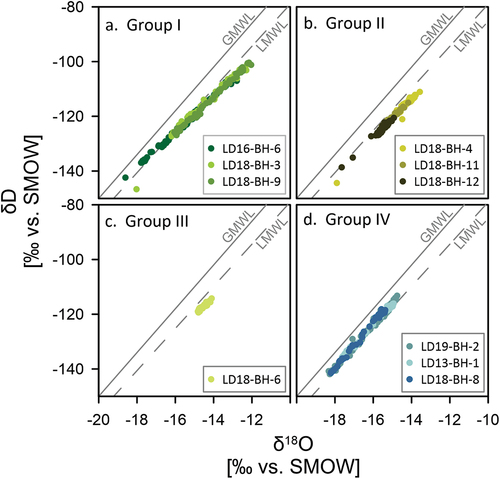
Table 8. δ18O, δD, d-excess, and EC values for both the last ice formed and for the water below the ice for different water bodies and associated separation factors εice-water for oxygen and hydrogen isotopes.
Table 9. Results of ice growth simulations for each individual core compared to the actual measured ice thicknesses.
Figure 8. Isotopic snow ice signals (a) on a δ18O-δD plot and (b) in the upper 20 cm of core LD18-BH-4 (Molo Lake). Note the reflection of the isotopic snow ice signal (i.e., light δ18O values in the upper ice) in the visual ice characteristics (milky white snow ice).
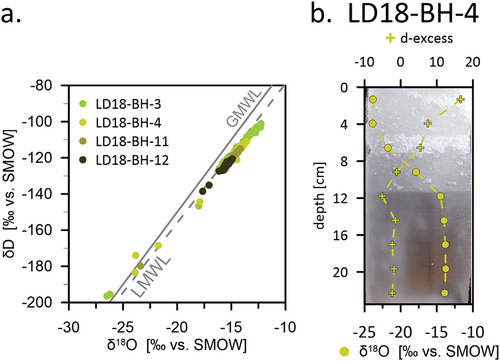
Figure 9. Results of the ice growth simulations for core LD19-BH-2 (a) and core LD16-BH-6 (b). The cores were chosen to discuss (a) the underestimation of river ice growth by Stefan and (b) the effect of using snow data of different resolutions in the Ashton equation.
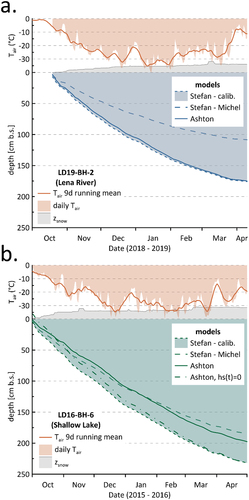
Figure 10. Differences between river water and ice chemistry. The time of freezing for ice cores was estimated using the ice growth models of Ashton. Ice chemistry is compared to water samples from the Lena Monitoring (+) and ArcticGRO (o) programs. (a) The difference in electrical conductivity (i.e., salt exclusion) over the 2018–2019 winter, (b) the same difference in EC plotted as a function of ice growth rate, (c) separation between river water and ice δ18O over the winter ice growth period (εice-water = δice − δwater; see Gibson and Prowse Citation2002), and (d) variation of the same fractionation values (excepting the upper six ice core samples) as a function of estimated ice growth rate.
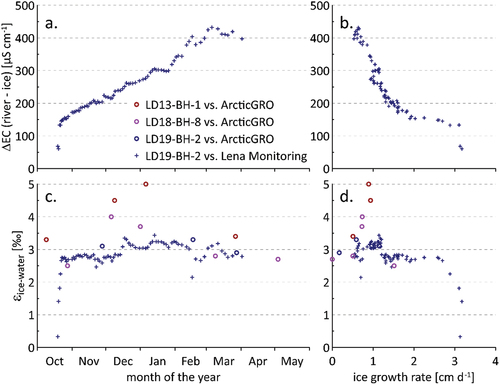
Figure 11. The stable oxygen isotope concentration in river ice (ice core LD19-BH-2) vs. interpolated values for sub-ice river water during ice growth. The linear fit is for congelation ice samples only (i.e., without the uppermost four ice core samples, gray open circles) and has the form: δ18Oice = 0.93 δ18Owater + 1.54 (n = 75, R2 = 0.96).
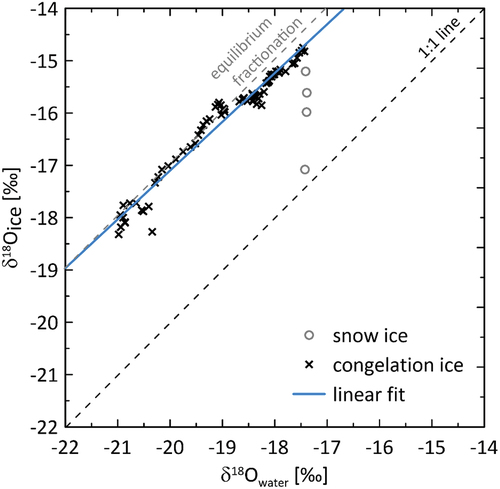
Figure 12. River ice δ18O values for all three river ice cores compared to reference data from the respective years (2012–2013, 2017–2018, and 2018–2019) provided by ArcticGRO and the Lena Monitoring Program (the latter for 2018–2019 only).
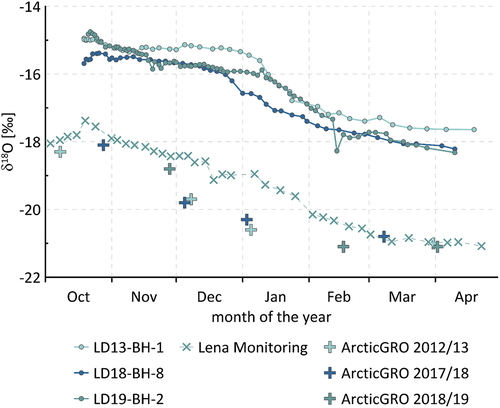
Data availability statement
ArcticGro data are available via https://arcticgreatrivers.org/data/. Lena River Monitoring Program data are available at https://doi.pangaea.de/10.1594/PANGAEA.913197.
